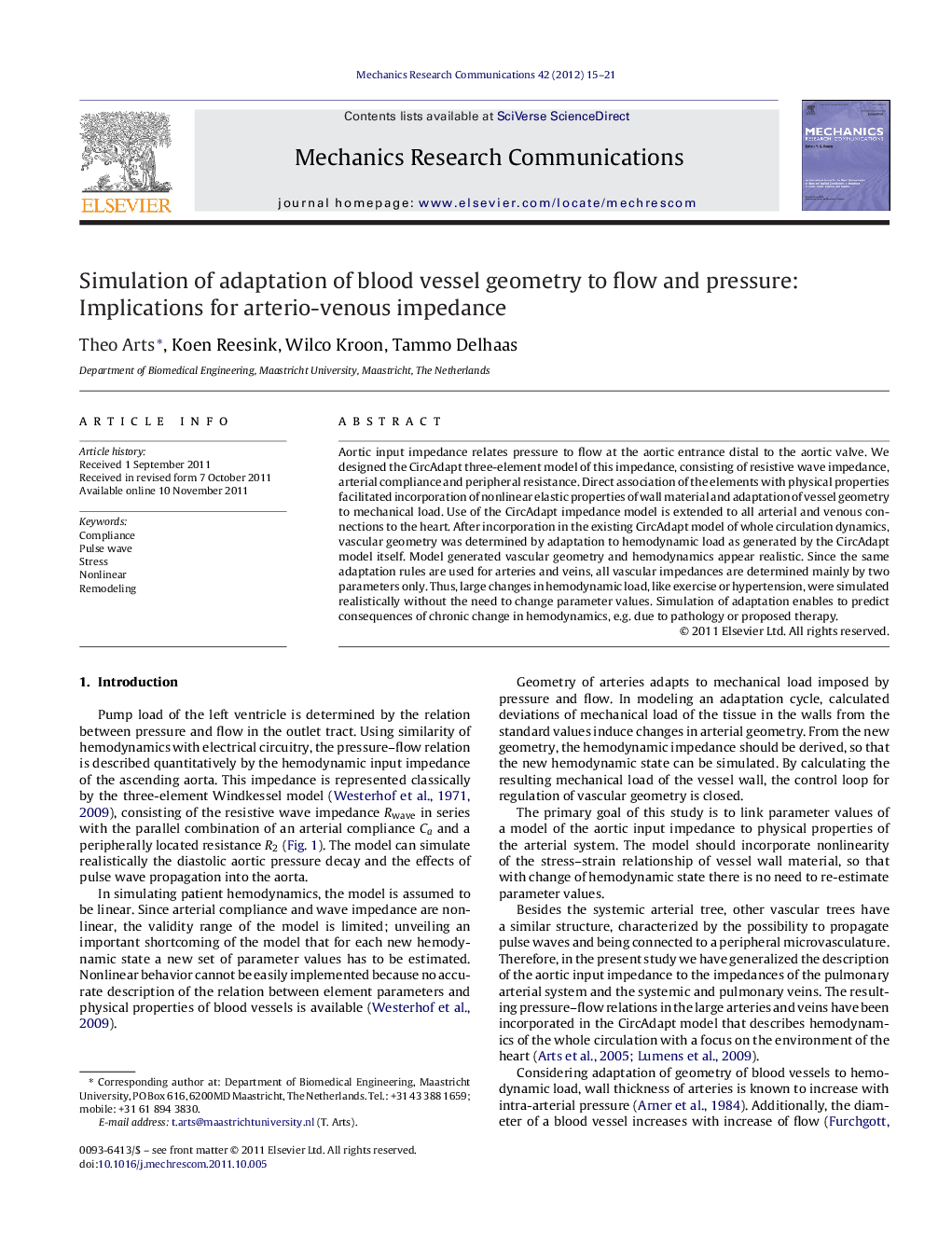| Article ID | Journal | Published Year | Pages | File Type |
|---|---|---|---|---|
| 799183 | Mechanics Research Communications | 2012 | 7 Pages |
Aortic input impedance relates pressure to flow at the aortic entrance distal to the aortic valve. We designed the CircAdapt three-element model of this impedance, consisting of resistive wave impedance, arterial compliance and peripheral resistance. Direct association of the elements with physical properties facilitated incorporation of nonlinear elastic properties of wall material and adaptation of vessel geometry to mechanical load. Use of the CircAdapt impedance model is extended to all arterial and venous connections to the heart. After incorporation in the existing CircAdapt model of whole circulation dynamics, vascular geometry was determined by adaptation to hemodynamic load as generated by the CircAdapt model itself. Model generated vascular geometry and hemodynamics appear realistic. Since the same adaptation rules are used for arteries and veins, all vascular impedances are determined mainly by two parameters only. Thus, large changes in hemodynamic load, like exercise or hypertension, were simulated realistically without the need to change parameter values. Simulation of adaptation enables to predict consequences of chronic change in hemodynamics, e.g. due to pathology or proposed therapy.
► We modeled a novel lumped arterio-venous impedance. ► The impedance features arterial and venous pulse waves and peripheral resistance. ► Nonlinearly elastic vessel wall material is taken universal to all blood vessels. ► Impedance is incorporated in the CircAdapt model of whole circulation hemodynamics. ► Adaptation of vascular geometry to mechanical load simplifies hemodynamic modeling.
